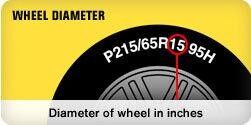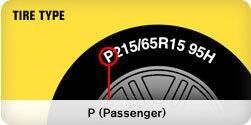Last Updated on 4 months
Unlocking Savings: Tips for Maximizing Value When Purchasing Cheap Tires
Buying a new set of tires can be a blow to your budget. However, there are ways to save money and get good, safe, long-lasting tires.
Tires tend to be one of a vehicle’s most underappreciated components. When it’s finally time to replace them, the buying process should not be taken lightly.
Not everyone can afford to spend large sums of money on premium tires. However, budgetary restrictions do not always mean you have to sacrifice value. With the proper planning, research, and due diligence, you can get the perfect tires for your vehicle, local weather, and driving style at an affordable price point.
Let’s discuss buying cheap tires and finding a solution that meets your needs.
1. Understand Your Exact Requirements
Step one in buying tires is determining the size you need. When pinpointing your tire size, there are five criteria you need to know. You can get all this information on the side of your old tires.
1. Type
A “P” indicates the tire is intended for passenger vehicles. If you see an “LT,” the tire is designed for light trucks.
2. Width
 The width is measured from sidewall to sidewall in millimeters. In the image above, the width of this tire is 215mm.
The width is measured from sidewall to sidewall in millimeters. In the image above, the width of this tire is 215mm.
3. Aspect Ratio
 This number is the ratio of the height of the tire’s cross-section against the width, the percentage. In the image above, the aspect ratio is 65%.
This number is the ratio of the height of the tire’s cross-section against the width, the percentage. In the image above, the aspect ratio is 65%.
4. Construction

Tires are either marked with an “R” for Radial or a “B” for Bias. The “R” means that the tire was built with layers that run radially. Bias tires are created with diagonal layers.
5. Wheel Diameter
 The wheel diameter is the measurement from one end to the other. /is a crucial bit of information that tells you the size of the wheel of which the tire must fit. In the image above, the diameter is 15 inches.
The wheel diameter is the measurement from one end to the other. /is a crucial bit of information that tells you the size of the wheel of which the tire must fit. In the image above, the diameter is 15 inches.
If you buy tires online, you must enter the EXACT size to ensure your tires will fit and perform optimally.
You can see your options once you enter your size into the tire calculator. Any mistakes in determining your tire size can (and likely will) lead to a severe headache.
If you are buying tires for a truck or van, in addition to tire size, you need to have a good idea of your average driving situation.
Do you primarily drive on paved roads?
Gravel roads?
Do you need some off-road capability?
Answers to these questions should guide your decision on the types of light truck tires you need.
In the process of buying tires for cars or trucks, the local climate and weather are essential. When nailing down the driving conditions you face throughout the year, planning for the worst is always best. If you live in a climate that experiences harsh winter conditions, you will need All-season tires or a dedicated set of Winter Tires. You want to have tires to accommodate the worst blizzard you can remember. It’s wise to be prepared for the worst and pleasantly surprised by anything better.
2. Determine Your Budget Range
The definition of “cheap tires” will be unique to your budget. Before shopping around and building expectations, you must have a clearly outlined budget range. The price range is highly dependent on the size of the tire. Remember that tires for a small compact car will be a fraction of the cost of high-performance tires for a BMW. To give you an idea, here are some general price points you can expect when buying tires for ordinary sedans like a Toyota Camry or Honda Accord on 16-inch tires:
- -Low-end: $200-$350 per set.
- -Mid-range: $350-$600 per set.
- -High-end: $600-$1000 per set.
From the perspective of the most popular budget brands, some of the lowest Federal tire prices for a passenger vehicle will run you between roughly $220 and $250 for a set measured 205/55R16.
If you want a more “middle-of-the-road” option for your passenger vehicle, Kumho cheap tires in size 215/55R16 will cost you between $295 and $320.
Both options are dependable and will give you a good bang for your buck.
The tire calculator should be your starting point as you begin shopping around. Once you enter your specific size, sort the options from cheapest to most expensive. A good strategy to remember when determining your budget range is to make note of the absolute most affordable option and then compare it to the prices of more premium brands like Michelin, Pirelli, or Continental. Most tire outlets will have numerous possibilities between those price points.
3. Compare the “Cheap Tire” Brands
There are many different “cheap tire” brands out there. Each has its own set of benefits and drawbacks. Chances are, you won’t get a good feel for the negative aspects of a particular tire directly from the catalog. This is why you need to pay close attention to the tire reviews.
Comparing cheap tires is a process. Hopefully, you have now mapped out your exact sizing requirements and driving needs. The most crucial part is prioritizing these criteria based on your unique situation. For instance, if you have long commutes and live in an area that experiences wintery conditions, your priorities list might look like this:
- Fuel economy
- All-weather capability
- Long tread wear
- Comfort
As you look at feedback on cheap tires, try to pinpoint patterns in bits of information about capability on wintery roads and traction on ice.
In these Milestar tire reviews, you’ll notice several patterns related to snow performance and good grip on ice.
Now, if you look at these Nexen tire reviews, you can see that their cheap tires have gotten feedback saying they are good on snow but do not do as well on ice.
As you read up on features and look into tire reviews of cheaper brands, use your priority list as the guide.
4. Look for Extra Savings from Mail-In Rebates and Coupons
Many novice shoppers overlook that brands always put out tire deals and coupons. If you play your cards right, you can score a great bargain and save anywhere from $40 to $80 on a set of tires from a premium brand.
Popular manufacturers like Michelin, Goodyear, Cooper, Pirelli, Hankook, and Falken commonly have rebates you can mail in with your receipts from Giga Tires. Some of the budget brands also do this from time to time.
Remember that certain tire deals and coupons sometimes apply to specific tire sizes and styles.
For example, if you are searching for 265/70R17 tire deals or 265/75R16 tire deals, you need to look for a clear indication that the mail-in rebates and coupons apply to light trucks.
Most big tire deals happen during high-selling times of the year, like the fall and spring. However, you DO NOT want to bypass the list of priorities you made in exchange for saving a few bucks. If you find a great deal on tires with some not-so-stellar feedback about winter capability, the money you saved at checkout might haunt you.
Conclusion
Getting the perfect solution when buying cheap tires is rarely a quick process, especially if you only possess surface-level industry knowledge. The good news is that plenty of affordable options will provide a nearly identical experience to the premium brands. The key is understanding your driving needs and situation to the smallest detail and setting priorities to guide your research. Hopefully, this post has provided some excellent insight to get you started.
Keep the tire knowledge rolling! Visit Giga Tires’ website for many articles that will boost your understanding.
- Discovering The Best Golf Cart Tires: Your Ultimate Selection Guide
- Good MT Tire: Discover The Qualities Of A Good MT Tire For On-Road Performance
- Discover The Top 3 MT Tires For Street Driving | Giga Tires
FAQs
Is it okay to buy the cheapest tires?
It’s possible to buy the cheapest tires, but it’s crucial to strike a balance between affordability and quality. Extremely cheap tires may compromise safety and performance. Researching and choosing tires that offer good value for your specific needs and budget is advisable.
What are the best tires for the cheapest price?
The best tires for the cheapest price can vary based on your vehicle type, driving habits, and regional climate. Look for reputable tire brands with models that fit your requirements. Consider all-season or budget-friendly tire options that offer a good balance of performance and cost-effectiveness.
Is it better to buy cheap or expensive tires?
The decision between cheap and expensive tires depends on your priorities. Expensive tires often provide superior performance, longevity, and handling, making them suitable for high-performance vehicles or drivers who prioritize safety. However, many drivers find that mid-range or budget-friendly tires offer a good compromise between quality and cost for everyday use.
Are cheaper tires harder to balance?
Cheaper tires are not inherently more complex to balance, but they may require more frequent balancing due to variations in manufacturing quality. Proper installation and balancing by a skilled technician are essential to ensure smooth and safe driving, regardless of the tire’s price. Regular maintenance can help mitigate any balance-related issues.
If you have any further questions, don’t hesitate to contact us. Our team at Giga is always happy to offer guidance!







